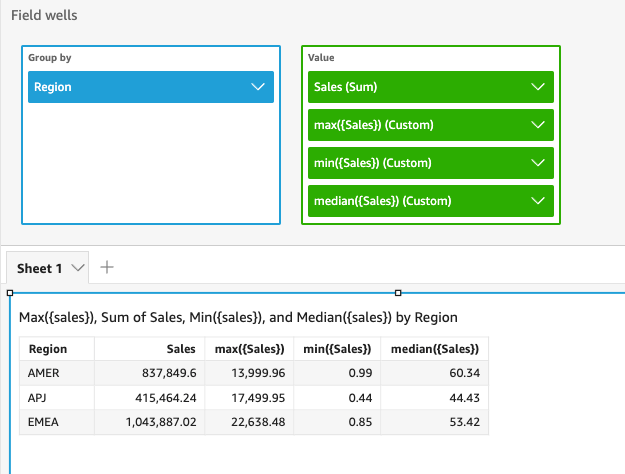max
The max function returns the maximum value of the specified
measure or date, grouped by the chosen dimension or dimensions. For example,
max(sales goal) returns the maximum sales goals grouped by the
(optional) chosen dimension.
Syntax
max(measure, [group-by level])
Arguments
- measure
-
The argument must be a measure or a date. Null values are omitted from the results. Literal values don't work. The argument must be a field.
Maximum dates work only in the Value field well of tables and pivot tables.
- group-by level
-
(Optional) Specifies the level to group the aggregation by. The level added can be any dimension or dimensions independent of the dimensions added to the visual.
The argument must be a dimension field. The group-by level must be enclosed in square brackets
[ ]. For more information, see LAC-A functions.
Examples
The following example returns the max sales value for each region. It is compared to the total, minimum, and median sales values.
max({Sales})

You can also specify at what level to group the computation using one or more dimensions in the view or in your dataset. This is called a LAC-A function. For more information about LAC-A functions, see LAC-A functions. The following example calculates the max sales at the Country level, but not across other dimensions (Region) in the visual.
max({Sales}, [Country])
